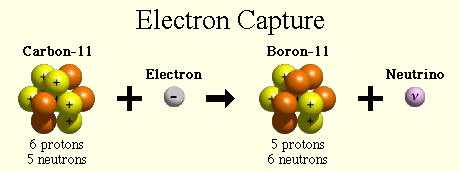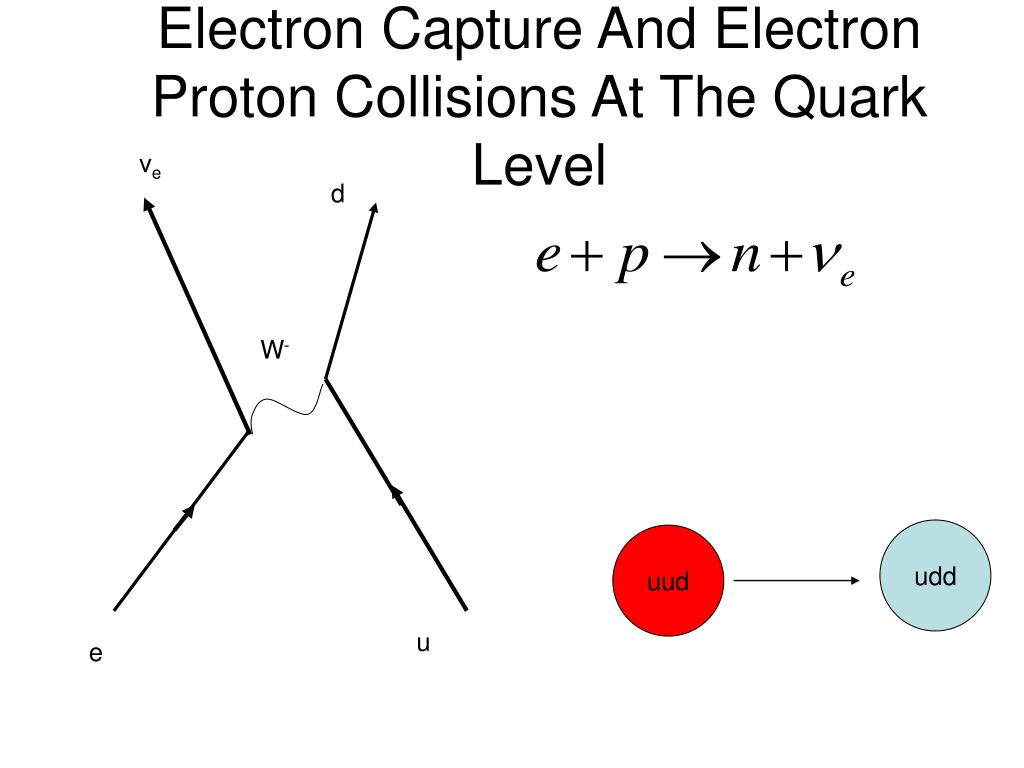

If the energy difference between the parent atom and the daughter atom is less than 1.022 MeV, positron emission is forbidden as not enough decay energy is available to allow it, and thus electron capture is the sole decay mode. Electron capture is sometimes called inverse beta decay, though this term usually refers to the interaction of an electron antineutrino with a proton.

In nuclear physics, beta decay is a type of radioactive decay in which a beta ray (fast energetic electron or positron) and a neutrino are emitted from an atomic nucleus. Electron capture is sometimes included as a type of beta decay, because the basic nuclear process, mediated by the weak force, is the same. Confirming a decades-old prediction, scientists found the first clear example of a type of stellar explosion called an electron-capture supernova (large white dot at right).

Electron capture is always an alternative decay mode for radioactive isotopes that do have sufficient energy to decay by positron emission. However, a positive atomic ion may result from further Auger electron emission.Įlectron capture is an example of weak interaction, one of the four fundamental forces.Įlectron capture is the primary decay mode for isotopes with a relative superabundance of protons in the nucleus, but with insufficient energy difference between the isotope and its prospective daughter (the isobar with one less positive charge) for the nuclide to decay by emitting a positron. Simple electron capture by itself results in a neutral atom, since the loss of the electron in the electron shell is balanced by a loss of positive nuclear charge. Electron capture sometimes also results in the Auger effect, where an electron is ejected from the atom's electron shell due to interactions between the atom's electrons in the process of seeking a lower energy electron state.įollowing electron capture, the atomic number is reduced by one, the neutron number is increased by one, and there is no change in mass number. Usually, a gamma ray is emitted during this transition, but nuclear de-excitation may also take place by internal conversion.įollowing capture of an inner electron from the atom, an outer electron replaces the electron that was captured and one or more characteristic X-ray photons is emitted in this process. The resulting daughter nuclide, if it is in an excited state, then transitions to its ground state. Similarly, the momentum of the neutrino emission causes the daughter atom to recoil with a single characteristic momentum. Since this single emitted neutrino carries the entire decay energy, it has this single characteristic energy. The outer electron is ejected from the atom, leaving a positive ion. Lower right: In the Auger effect, the energy absorbed when the outer electron replaces the inner electron is transferred to an outer electron. An x-ray, equal in energy to the difference between the two electron shells, is emitted. It occurs for isotopes that have a neutron to proton ratio that is. Lower left: An outer electron replaces the "missing" electron. Electron capture is a form of radioactive decay that is very similar to positron emission. This virtual device can then be queried with in which a proton-rich nuclide absorbs an inner atomic electron It is possible to circumvent this limitation by capturing system audio with another macOS app like Soundflower and passing it through a virtual audio input device. Chromium, and by extension Electron, does not provide this. does not work on macOS for audio capture due to a fundamental limitation whereby apps that want to access the system's audio require a signed kernel extension. Which can detected by systemPreferences.getMediaAccessStatus. Note Capturing the screen contents requires user consent on macOS 10.15 Catalina or higher, Returns Promise - Resolves with an array of DesktopCapturerSource objects, each DesktopCapturerSource represents a screen or an individual window that can be captured. When false the appIcon property of the sources return null.


 0 kommentar(er)
0 kommentar(er)
